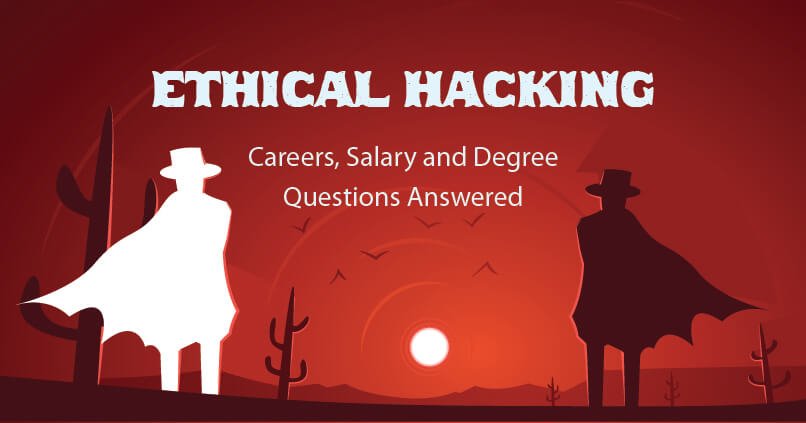Cyber threat hunters detect and investigate security threats that bypass automated defenses. Instead of waiting for alerts, they search networks for suspicious activity, analyze attack patterns and stop breaches before they cause damage.
With cyberattacks becoming more complex, companies need professionals who can recognize and contain threats early. Threat hunters use their knowledge of network security, forensic analysis and attacker tactics to uncover hidden risks and strengthen defenses.
If you’re looking for a career where you can outthink cybercriminals and make a real impact, threat hunting offers a path to do just that.
What Is Cyber Threat Hunting?
Cyber threat hunting is a proactive cybersecurity approach that identifies threats designed to bypass automated defenses. Instead of waiting for alerts, threat hunters actively search for indicators of compromise within networks and systems.
Unlike traditional security operations, which respond to known threats, threat hunting assumes attackers may have already gained access. By analyzing weak points and suspicious activity, security teams can uncover vulnerabilities before they are exploited.
This method strengthens defenses by integrating human expertise with security tools. A proactive approach helps organizations detect and contain threats early, reducing risk and improving response strategies.
What Does a Cyber Threat Hunter Do?
A cyber threat hunter’s typical responsibilities include:
- Monitoring network traffic, system logs and endpoint activity for suspicious behavior
- Using Security Information and Event Management (SIEM) systems, intrusion detection tools and behavioral analytics for threat detection
- Investigating security incidents by analyzing malware, tracing attack vectors and reverse-engineering exploits
- Collaborating with incident response teams on containment efforts and security improvements
- Documenting findings and creating reports that help organizations refine cybersecurity strategies
These actions help organizations minimize risks and enhance their defenses against future cyberattacks.
Essential Skills for Threat Hunters
Threat hunters need strong technical, analytical and problem-solving skills to identify and contain cyber threats. Mastering these areas enables them to assess attacks, uncover vulnerabilities and strengthen security measures.
- Technical skills:
- In-depth understanding of operating systems, including Windows, Linux and macOS, to identify platform-specific threats
- Knowledge of networking protocols and architectures to analyze network traffic and detect anomalies
- Proficiency in scripting and programming languages, such as Python, PowerShell or Bash, to automate tasks and analyze scripts used in attacks
- Analytical skills:
- Strong data analysis capabilities to interpret large datasets and identify patterns indicative of malicious activity
- Ability to think like an adversary to anticipate potential attack vectors and methodologies
- Certifications:
- Certified Information Systems Security Professional (CISSP) to demonstrate a broad understanding of cybersecurity principles
- GIAC Certified Incident Handler (GCIH) to validate skills in incident handling and response
- Certified Ethical Hacker (CEH) to showcase knowledge of hacking techniques and tools
- Soft skills:
- Excellent communication skills to effectively convey complex technical information to non-technical stakeholders
- Strong problem-solving abilities to develop innovative solutions to complex security challenges
Threat hunters who continually refine their skills are better equipped to uncover sophisticated threats, improve cybersecurity strategies and advance their careers.
RELATED RESOURCE: How to Become a Cybercrime Investigator [+ Salary & Career Guide] >>
4 Steps to Becoming a Cyber Threat Hunter
Building a career in threat hunting requires education, practical experience and industry-recognized certifications. Professionals follow these key steps to develop the expertise needed for success:
1. Invest in Your Education
A background in cybersecurity, computer science or a related field provides the foundation for analyzing security systems, detecting threats and understanding adversary techniques. Many threat hunters start with a bachelor’s degree, while others gain skills through online courses, boot camps or cybersecurity competitions.
For those aiming to advance in their careers, a master’s degree offers a deeper knowledge of cybersecurity operations and leadership. The Master of Science in Cyber Security Operations and Leadership and the Master of Science in Cyber Security Engineering at the University of San Diego provide specialized training in threat detection, risk management and security strategy.
2. Gain Hands-On Experience
Practical experience is crucial for developing investigative techniques and threat detection skills. Many professionals begin as Security Operations Center (SOC) analysts or incident responders. Internships, capture-the-flag (CTF) competitions and bug bounty programs also provide opportunities to solve real-world security challenges. Working with open-source security tools and practicing in virtual lab environments further enhances practical expertise.
3. Obtain Industry Certifications
Certifications validate a threat hunter’s skills and improve job prospects. The CISSP covers security architecture and risk management, the GCIH focuses on threat detection and incident handling, and the CEH provides hands-on training in ethical hacking techniques. Earning these credentials helps professionals stand out in the cybersecurity job market.
4. Stay Current and Continue Learning
Cyber threats constantly evolve, requiring professionals to stay ahead of new attack methods and security technologies. Threat hunters sharpen their skills by researching emerging threats, engaging with cybersecurity communities and attending industry events. Many also specialize in areas like malware analysis, threat intelligence or digital forensics to expand their expertise and career opportunities.
RELATED RESOURCE: Interested in cyber security and healthcare? The need for cyber security experts in this area is critical >>
Threat Hunter Career Path and Growth
Threat hunting offers a clear path for career growth, with opportunities to move from entry-level security roles to senior and leadership positions. As organizations increase their focus on proactive cybersecurity, skilled professionals who can detect and contain advanced threats are in high demand. Here’s a closer look at how threat hunters progress in their careers, potential salary expectations and ways to stay competitive.
Career Trajectory for Cyber Threat Hunters
Many professionals begin their careers in cybersecurity before specializing in threat hunting. A typical path includes:
- Entry-level: Starting as a junior threat analyst or SOC analyst, focusing on monitoring security alerts and detecting suspicious activity
- Mid-level: Advancing to a senior threat hunter role, leading investigations, identifying sophisticated threats and mentoring junior analysts
- Leadership positions: Moving into roles like Threat Hunting Team Lead or Director of Threat Intelligence, overseeing hunting operations, security strategies and team development
Cyber Threat Hunter Salary
Threat hunter salaries vary by experience, industry and location. According to Glassdoor*, cyber threat hunters earn:
- Estimated total pay: $149,734 per year
- Average base salary: $101,900 per year
- Salary range: $112,000 – $203,000 per year
*Note: Salary figures were sourced as of March 2025. Salaries may vary based on various factors, including employer, geographic location and experience level.
Cyber Threat Hunter Job Growth Outlook
Cybersecurity professionals, including threat hunters, are in high demand. According to Forbes, the U.S. Bureau of Labor Statistics projects a 32% increase in cybersecurity jobs from 2022 to 2032—a significantly faster growth rate than the 3% average for all occupations.
Career Advancement Tips
To accelerate career growth and stand out in the applicant pool, threat hunters can:
- Earn advanced certifications including the GIAC Certified Incident Handler (GCIH) or Offensive Security Certified Professional (OSCP) to validate expertise
- Specialize in high-demand areas, such as malware analysis, digital forensics or threat intelligence, to expand career opportunities
- Build a strong professional network by attending cybersecurity conferences, industry events and online communities to connect with employers and peers
Challenges and Opportunities in the Field
Threat hunting is a demanding career that requires ongoing learning and adaptability. While it comes with challenges, it also presents significant opportunities for professional growth.
Top Challenges
- Keeping up with evolving attack techniques as cybercriminals develop new tactics
- Filtering through large volumes of security data to distinguish real threats from false positives
- Responding to incidents quickly while maintaining proactive hunting efforts
- Balancing detection and investigation responsibilities with other security operations
Top Opportunities
- Taking advantage of advancements in artificial intelligence and machine learning to enhance threat detection
- Expanding cybersecurity roles in industries such as healthcare, finance and critical infrastructure
- Increased demand for specialists in malware analysis, digital forensics and cyber threat intelligence
- Growing opportunities for remote work as companies build distributed security teams
Threat hunting offers a career path with long-term potential. Professionals who refine their investigative skills, adapt to emerging threats and specialize in high-demand areas can advance into leadership roles and shape the future of cybersecurity.
DID YOU KNOW?: 45 Cybersecurity Statistics and Facts for 2025 >>
Your Future in Cyber Threat Hunting
As cyber threats escalate, organizations need experts who can uncover hidden attacks and contain security breaches. Threat hunting offers a fast-growing, high-impact career for professionals with strong analytical and technical skills. Gaining expertise through education, hands-on experience and continuous learning is essential for success in this field.
The Master of Science in Cyber Security Operations and Leadership and the Master of Science in Cyber Security Engineering at the University of San Diego provide specialized training for those seeking leadership roles in cybersecurity.
Thinking about becoming a cybersecurity professional but not sure where to start? Download our eBook, Everything You Need to Know About a Career in Cybersecurity, to explore career paths, skills and job opportunities in this field.




